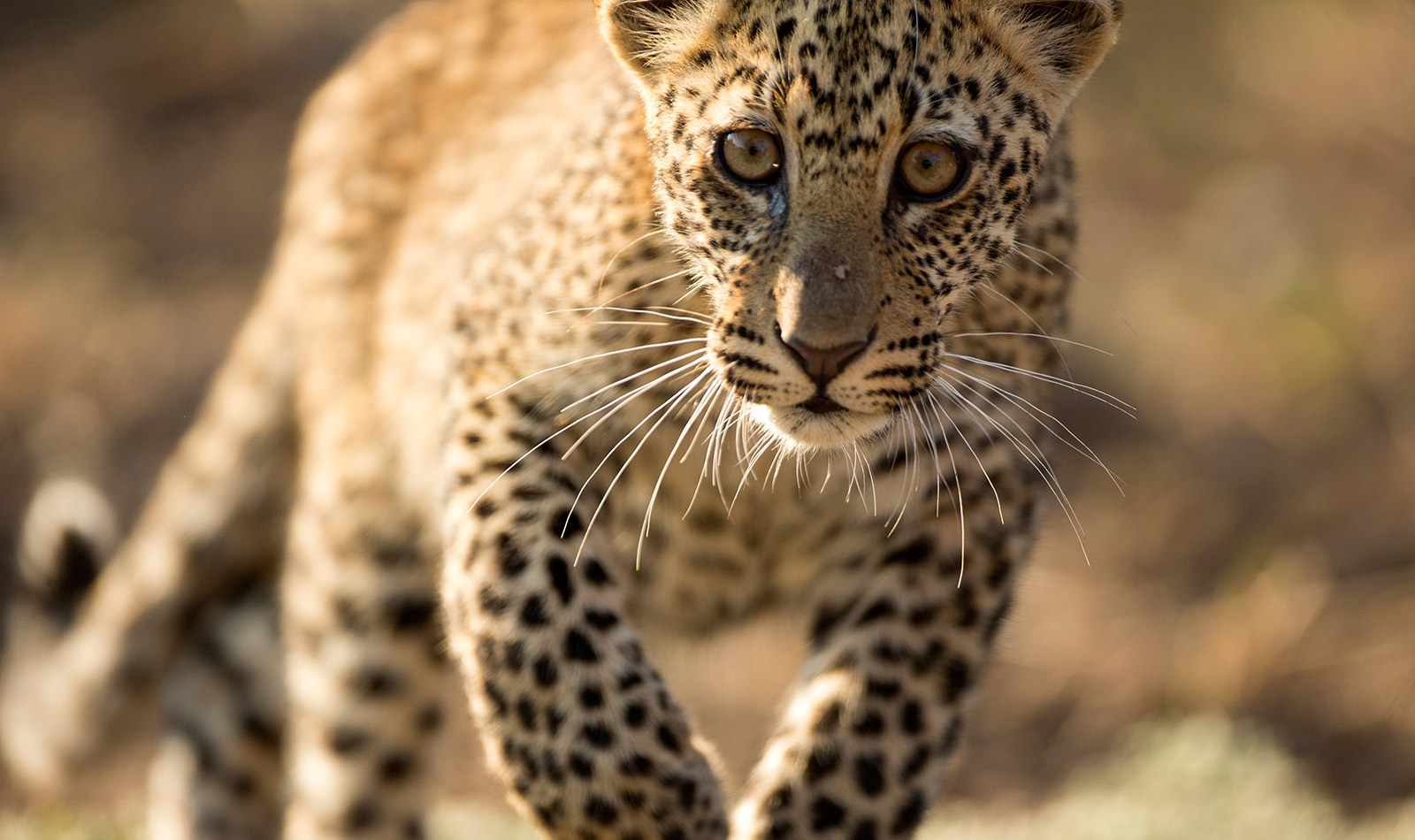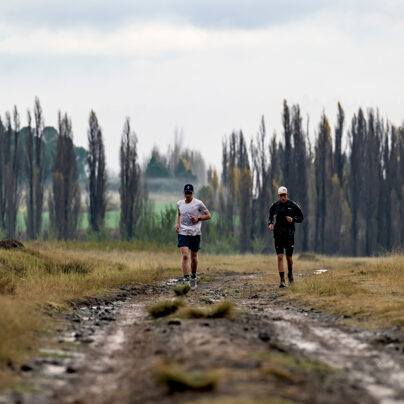Leopard Tales
Luke Massey
I’d spent the past two weeks in Malta filming illegal hunters and was burned-out and ready to go home when the email arrived in my inbox: ‘We’ve a local leopard who has given birth and we’d like someone to come and film her and the cubs as soon as possible.’ I may have been tired but fortunately I wasn’t dreaming. I was off for three months in South Luangwa, Zambia’s second largest national park.
I’d seen the documentaries of the grassy plains speckled with buffalo while prides of lions lay beneath lone acacias, but I’d also heard the horror stories of animals surrounded by vehicles, the peace and tranquility of the savannah destroyed by the roar of Land Rovers all jostling for position. No thanks. I prefer sitting in the wilds alone, just me and the wildlife. I hoped I wasn’t going to hate the next three months.
That first night in the park I felt five years old again, the same excited feeling in my stomach I’d get as a child on Christmas Eve. I couldn’t sleep. It felt like an age until my alarm went off and the instant it did I was out of bed, dressed, and ready to head into the park.
It was no grassy savannah. Dense bushes lined the track with the odd break revealing a waterhole or small plain. Birds constantly flitted about the bushes. Go-away-birds shouted ‘go away!’ from the tops of mopani scrub whilst mixed flocks of hornbills lifted off as one from the ground as I passed in my vehicle. Everything was new and once again I was like a child in a sweetshop, but the enormity of the task of finding leopards here hit me.
South Luangwa National Park covers 9,000 square kilometers. Unlike some African parks, it’s completely unfenced and there is plenty of room for leopards to hide. My base was just inside the park, a small house in the heart of leopard territory. Hyenas cackled outside my window, genets foraged rustling leaves, and an incredibly rare pangolin once paid me a visit. Occasionally, lions would stroll through.
But as the days turned into weeks I saw no leopards. I’d get fleeting glimpses just after sunset, or even in darkness, but the whereabouts of the female and her cubs was unknown. Rumours began to circulate that her cubs had died due to lack of food, or maybe something more sinister. Hyenas were abundant, their laughs audible through the night, chilling yelps and cackles as they bounded through the scrub in search of a meal – a meal that could consist of a leopard cub or two.
The cub’s mother was something of a legend in the park. Local guides named her Alice. No one was able to tell me exactly why. Just like no one could tell me how old she was. One person would say ten, another fifteen – ancient for a leopard. Her purported grandmother, Marmalade, had equal fame in the park during her reign. Both Alice and Marmalade weren’t normal leopards; they hunted in daylight and were unfazed by vehicles. Yet, no matter how human-tolerant Alice was she wasn’t revealing herself to me quite yet. I wondered just how many times I’d passed her whilst she lay unseen, watching me.
I felt five years old again, the same excited feeling in my stomach I’d get as a child on Christmas Eve. I couldn’t sleep. It felt like an age until my alarm went off and the instant it did I was out of bed, dressed, and ready
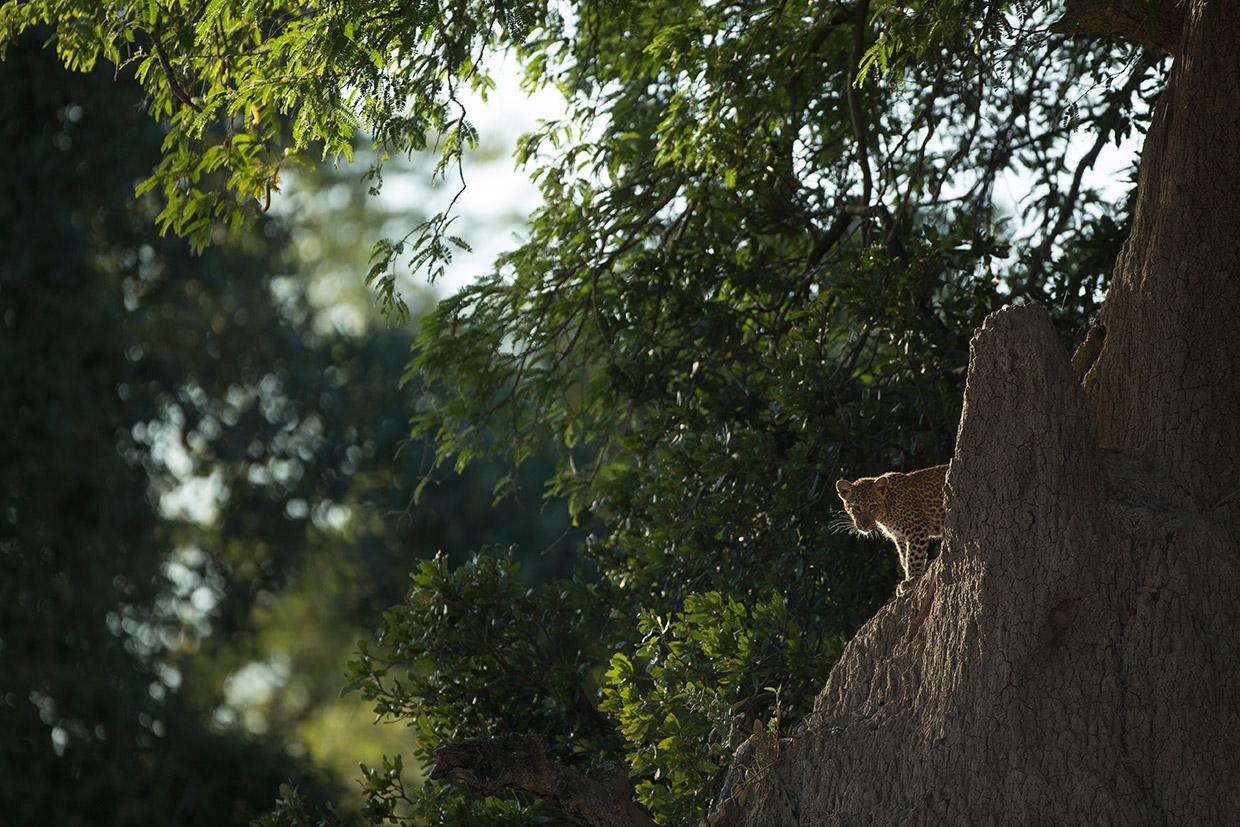
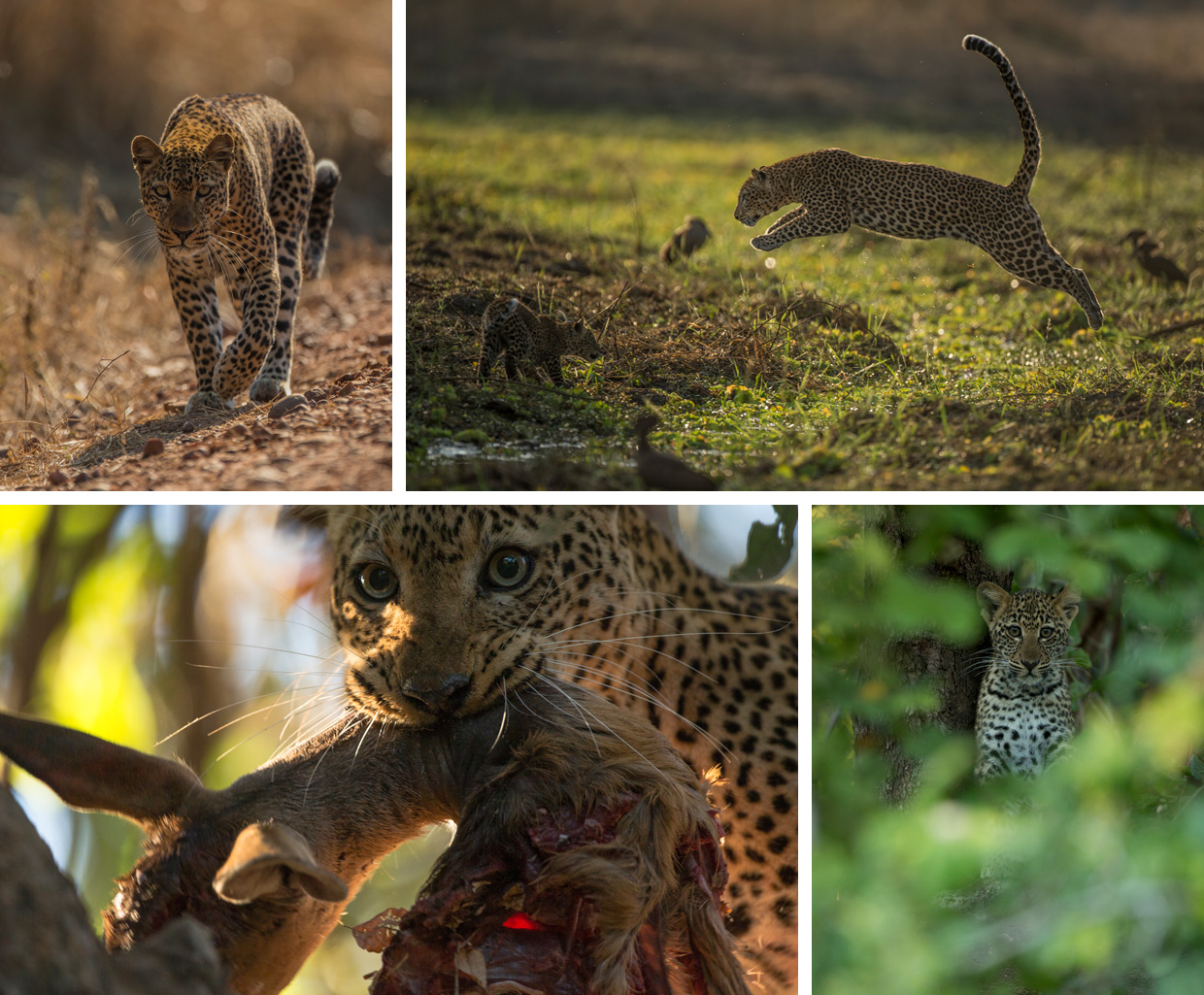
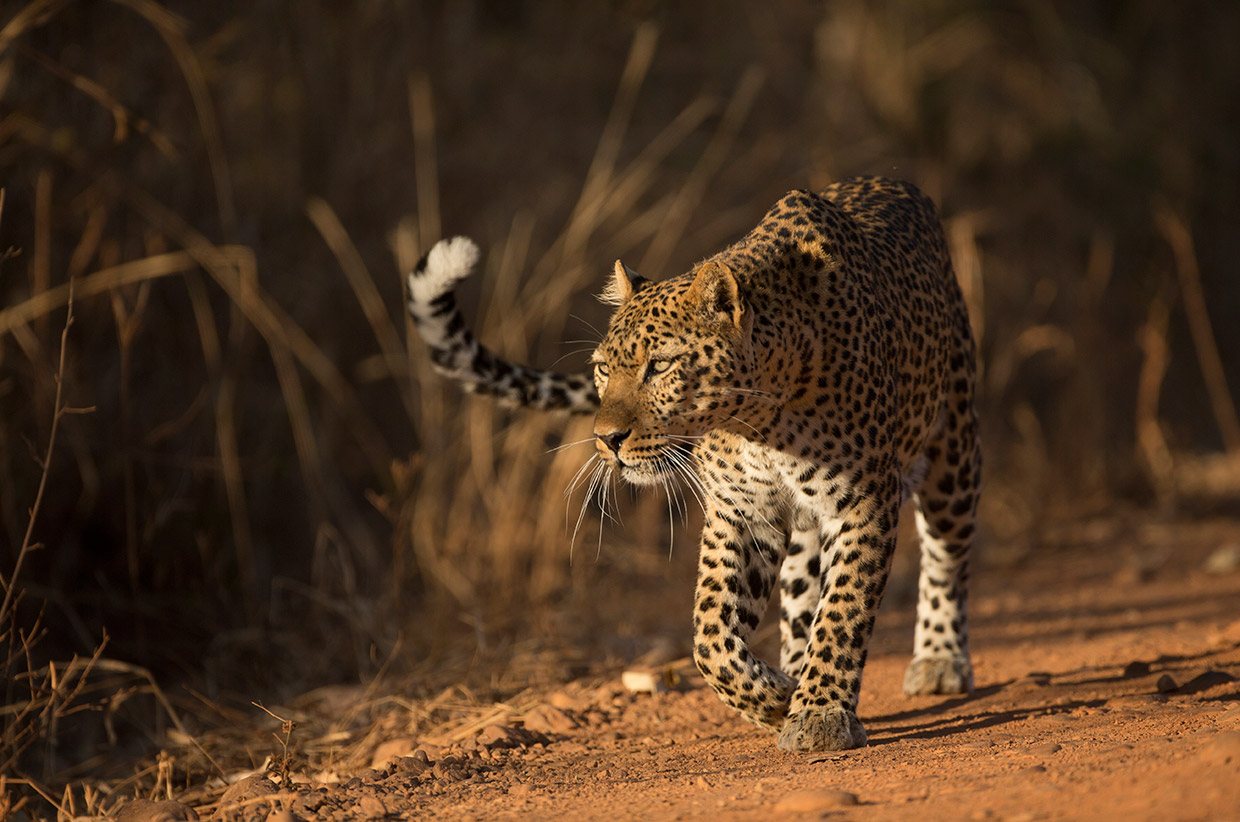
I came round a bend to a leopard strolling nonchalantly towards me. I almost immediately knew this was Alice. Though her eyes pierced straight through me, there was no aggression. She wasn’t feeling threatened
Surely my luck would come soon. I loved the park but worried for the welfare of the mystery cubs. And if there were no cubs to film would I be sent home?
Then during a quiet drive on my fifteenth day in the park, as the sun was beating down and most animals had peaked in activity and I was ready to head back in, I came round a bend to a leopard strolling nonchalantly towards me. I almost immediately knew this was Alice. Though her eyes pierced straight through me, there was no aggression. She wasn’t feeling threatened. Her ears were alert, listening for any sound that could mean lunch. She strolled within feet of me as if I wasn’t there. As quickly as I’d found her she vanished, melting back into the bush. But Alice’s presence meant the cubs (if still alive) weren’t far away. My haystack just decreased in size.
It had almost been a week since my Alice encounter. The park was quiet. The local pride of lions were stretched out across a very accessible river bank so any park visitors were with them. I headed in the opposite direction. Nothing was distracting me from finding the cubs. But then it was nearly dusk, the light was failing, and another of my drives looked to be ending leopardlessly. I headed towards the main road when there in the open was Alice, lying completely relaxed beside some scrub. I switched the spotting lamp on. As I panned the light across there was a glint behind Alice. Whipping the light back there was the same glint—another pair of eyes.
I went as near as I dared, not wanting to spook Alice. There behind her was what I’d been waiting the past two weeks to see. A leopard cub, only slightly bigger than a domestic cat, complete with oversized paws and ears. It quickly retreated into the bush and I switched the light out. At this size the cub wasn’t going to move far overnight. I hoped they’d still be there in the morning.
I’d finally found them. I couldn’t sleep. It was like my first night in the park all over again, It may have only been a single cub, but it was a cub all the same. Alice had been keeping it hidden and finally the game of hide and seek was over. Well, the first round anyway.
The next morning I sped to the previous night’s spot and sure enough there was the cub, high up the tree and not alone! The reason for its whereabouts was clear – an unlucky impala hung in the tree by Alice. The pure strength of a leopard always amazes me. A female like Alice might weigh fifty kilograms, a fully grown male impala nearing sixty five. To drag something heavier than yourself, by the teeth, twenty-five feet up a tree is no easy feat. I cursed the hyenas every time I saw it happen: The slow stalk by the leopard, the pounce and swift kill, then the mammoth journey to drag the kill to safety before the hyenas, attracted by the same animal alarm calls that alerted me, would appear and steal the kill.
My elation grew when a soft mewing came from a neighbouring tree. Both cubs were alive! They descended from the safety of the trees to greet their mother. They were Alice’s fourth known set of cubs and with her senior years upon her they’d likely be her last. But with eight new leopards brought into the park by her alone, her dynasty would live on.
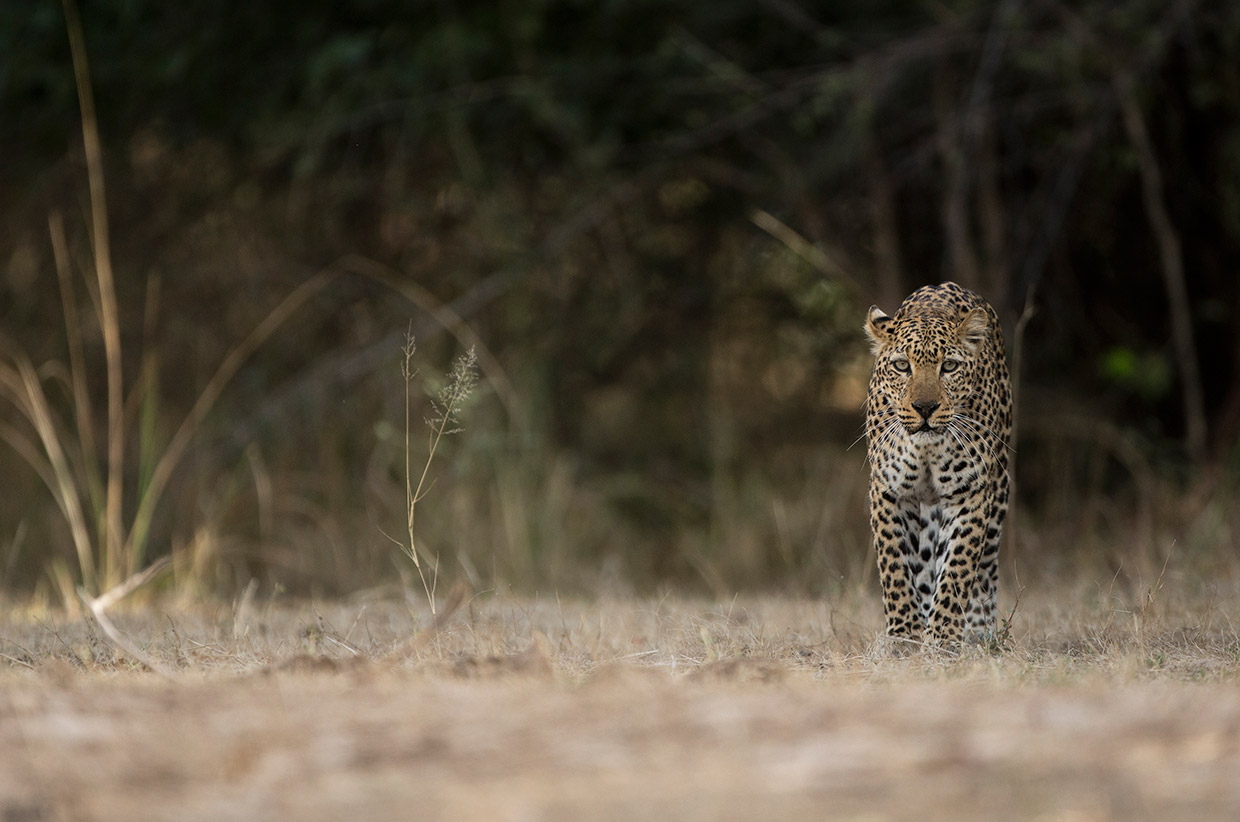
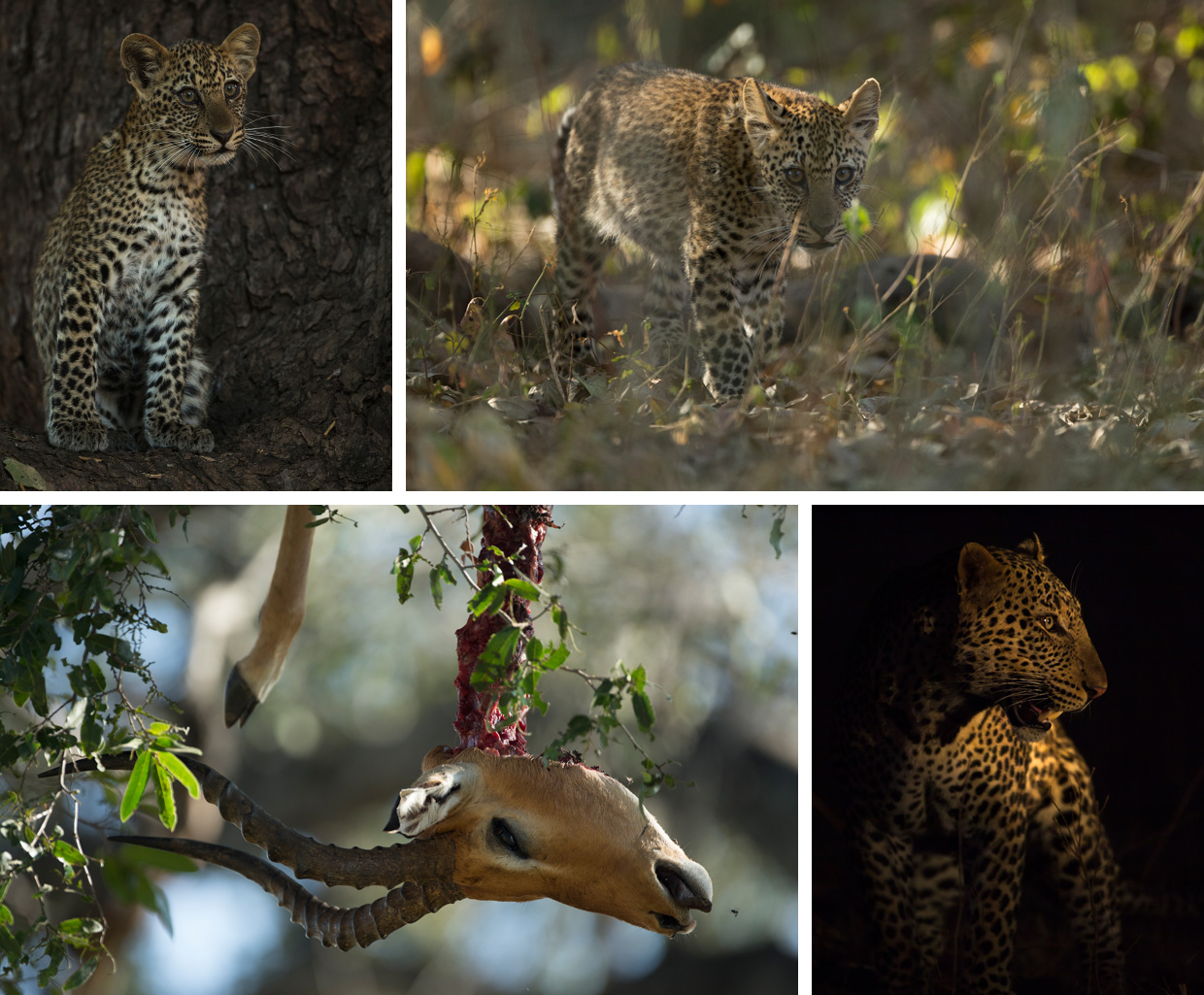
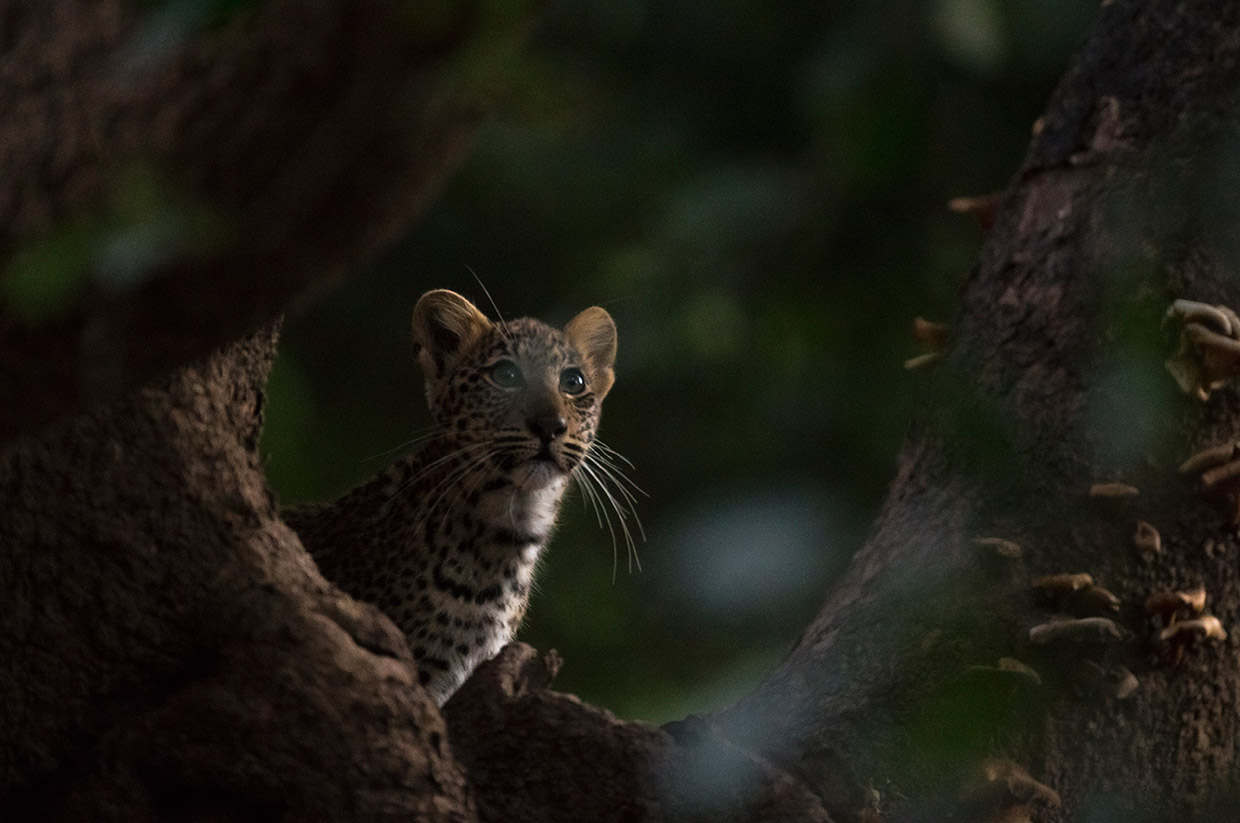
My early fears that the cubs had been eaten by hyenas were rekindled every time I saw the cubs stuck up a tree with the local hyena gang surrounding it, staring up longingly. But other times a cub would descend a tree within feet of a hyena, which wouldn’t even raise its head in acknowledgement of the furry snack passing by.
Others told me (and so did the books) that a male leopard wouldn’t tolerate the presence of young cubs, whether it had sired them or not. Alice’s three-year-old son frequented the area the cubs called home. He was a big leopard and still had a lot of growing to do, his huge head showed that. He was rapidly becoming the territorial male – the old, one-eyed male had been absent for some time and Alice’s son ranged long distances daily, reinforcing his new reign over the kingdom.
The son often approached the cubs and despite Alice hisses and snarls, he wasn’t perturbed. Early on, these encounters would be playful, the cubs nosing at him and him being incredibly gentle in return. As time drew on and the cubs began to take their mother’s advice and snarl at him, he’d pat them before Alice drove him away. Never did he seem to threaten them.
As my journey with the leopards went on, with me and them sitting, waiting for something to happen, I didn’t know if I was the observer or the one being observed. Other days the cubs were energetic, bounding from tree to tree. I’d have heart-in-mouth moments as they’d slip on a branch and plummet to the ground with a thud, only to get back up and chase after their sibling. What looked like play to me was all valuable practice.
The stalking of a hammerkop beside a waterhole could be used in the future on an impala. The endless ascents and descents of ebony trees built up the cubs’ muscles. Their playful rough-and-tumble bouts were valuable self-defence lessons. The more I watched them grow, the stronger the bond between us grew. I say bond but it was incredibly one-sided. I’m sure they’d have noticed if the boy who stared at them all day long vanished, but I doubt their lives would be much different without me. I sadly could not say the same when my three months came to an end.
My last sighting was brief but it gave me a chance to say goodbye. They’d eluded me for a few days and I was desperate to see them one last time. Alice had made a kill and I managed to find her leading them to it, glimpsing them as they crossed the road together just after dark. And then they vanished into the bush.
It is a privilege to share the planet with such a creature as the leopard. From never visiting Africa ,or even ever seeing a leopard in the flesh, I left this amazing place with a new favourite animal and plenty of stories to tell – even if, for now, there is a leopard shaped hole in my life.
Luke Massey is a 23 year old wildlife photographer and cameraman. He has worked for the BBC on a number of series including Great British Year, Springwatch, The Burrowers and Winterwatch.
Alongside this work he was also the main cameraman on Chris Packham’s online series, Malta: Masssacre on Migration. Highlighting the illegal bird hunting in Malta. The project won a Green Ribbon award for ‘Best environmental campaign by the media 2014’. His stills work has been widely published and he is passionate about conservation. He is about to begin a project on the critically endangered Iberian lynx.
Website: lmasseyimages.com
Facebook: facebook.com/lukemasseyimages
Twitter: @LMasseyImages
Instagram: @lmasseyimages
Vimeo: vimeo.com/lmasseyimages



